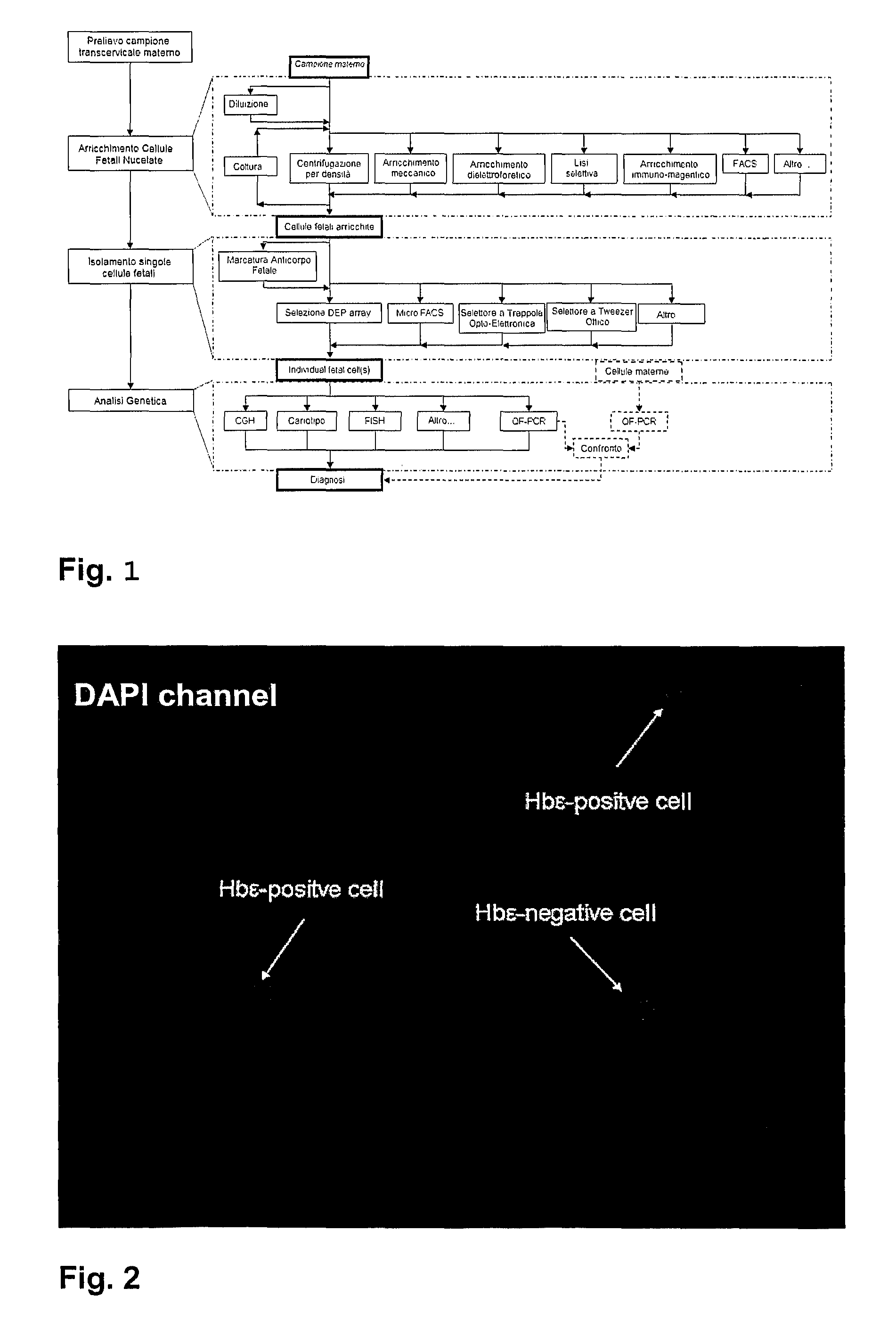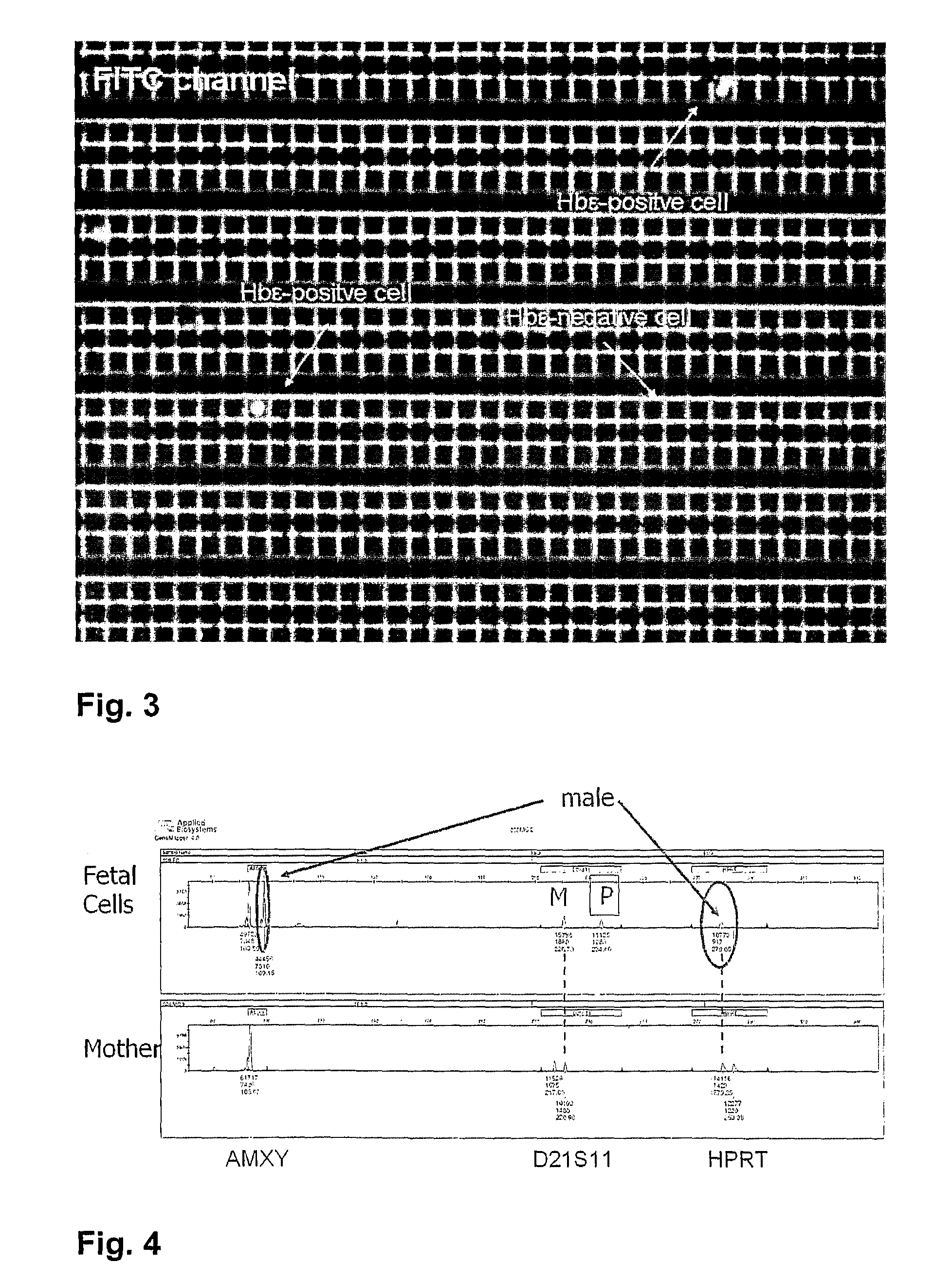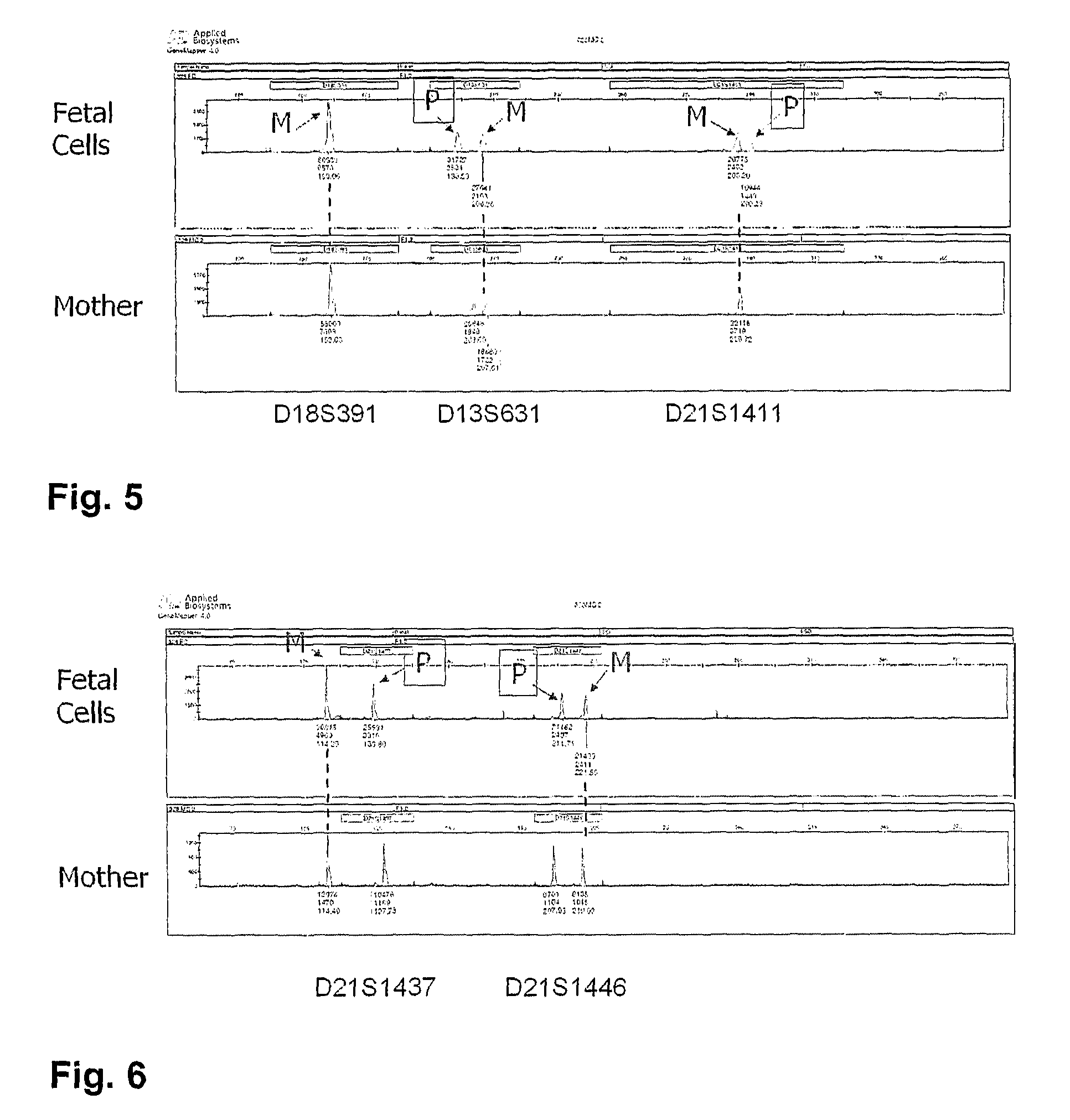Method for non-invasive prenatal diagnosis
a prenatal diagnosis and non-invasive technology, applied in the field of non-invasive prenatal diagnosis, can solve the problems of increased risk of miscarriage, loss of parts of cells, and laborious scoring system, and achieve the effect of high level of reliability
- Summary
- Abstract
- Description
- Claims
- Application Information
AI Technical Summary
Benefits of technology
Problems solved by technology
Method used
Image
Examples
Embodiment Construction
[0035]The subject of the present invention is a method for performing non-invasive prenatal diagnosis.
Collection of Transcervical Samples
[0036]The transcervical samples (TCC) can be taken from different levels of the uterus (external bone, lower part of cervical canal, lower uterine pole, intrauterine cavity) by means of various techniques: aspiration of the cervical mucus, cytobrush or swab, endocervical lavage and intrauterine lavage (IUL).
Enrichment Starting from Peripheral Blood
[0037]The proportion of foetal cells can be enriched using various methods, for example centrifugation on density gradient, consisting of solutions such as Ficoll or Percoll; mechanical enrichment, based on microfabricated filters which select nRBC and empty the sample of RBC; enrichment via dielectrophoretic separation by means of a specific device, the Dielectrophoretic activated cell sorter (DACS); selective lysis, for example selective lysis of the erythrocytes of no interest; immunomagnetic separatio...
PUM
| Property | Measurement | Unit |
|---|---|---|
| wavelengths | aaaaa | aaaaa |
| surface | aaaaa | aaaaa |
| density | aaaaa | aaaaa |
Abstract
Description
Claims
Application Information
 Login to View More
Login to View More - R&D
- Intellectual Property
- Life Sciences
- Materials
- Tech Scout
- Unparalleled Data Quality
- Higher Quality Content
- 60% Fewer Hallucinations
Browse by: Latest US Patents, China's latest patents, Technical Efficacy Thesaurus, Application Domain, Technology Topic, Popular Technical Reports.
© 2025 PatSnap. All rights reserved.Legal|Privacy policy|Modern Slavery Act Transparency Statement|Sitemap|About US| Contact US: help@patsnap.com



